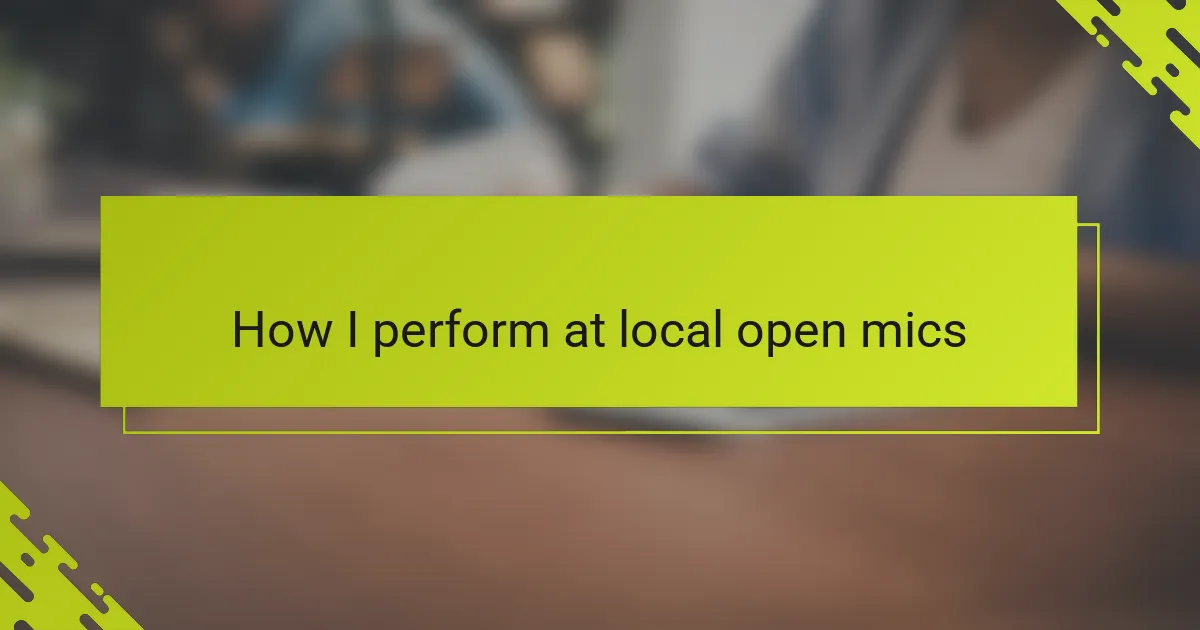Key takeaways
- Local open mics encourage inclusivity and authenticity, creating a supportive community for performers to share their truths.
- Choosing the right open mic involves assessing its vibe, audience, and the overall community present, which can enhance the performance experience.
- Effective audience engagement is built on eye contact, timing, and vulnerability, transforming listeners into active participants.
- Sharing personal stories not only fosters connection but also empowers performers to affirm their identities within a larger cultural context.
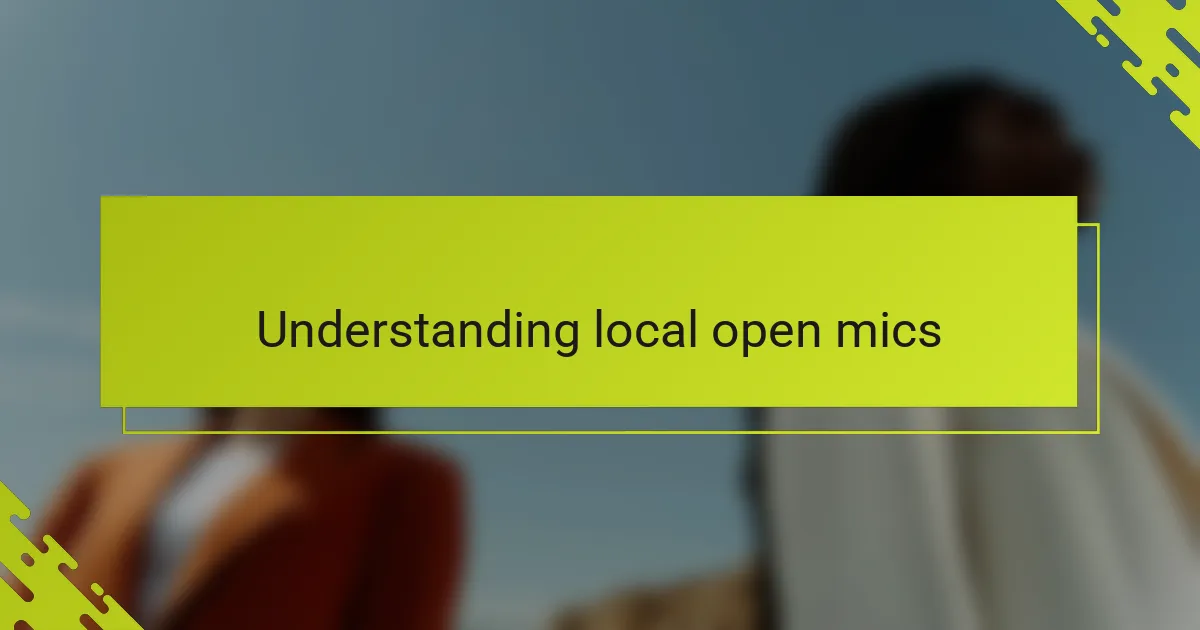
Understanding local open mics
Local open mics are these vibrant, unscripted spaces where anyone with a voice or a story can step up and share. I remember the first time I braved the mic—it was terrifying but also electric, like the room suddenly became a living, breathing part of me. Have you ever felt that sudden rush of connection when strangers nod or laugh along with your words?
What makes open mics unique is their spirit of inclusivity and experimentation. It’s not about perfection but about showing up authentically; every performance is a snapshot of individual truth, raw and unfiltered. I find that this environment pushes me beyond my comfort zone but also envelops me with support in the most unexpected ways.
These nights are more than just stages—they’re communities in miniature, offering a rare blend of vulnerability and empowerment. I often ask myself why these moments resonate so deeply. Perhaps it’s because in that shared space, we’re all seen and heard just as we are.

Overview of queer women culture
Queer women culture, to me, feels like a vibrant tapestry woven from diverse identities, experiences, and expressions. It’s a space where authenticity isn’t just welcomed—it’s celebrated. Have you ever noticed how stepping into these circles feels like coming home, even if you’re meeting people for the very first time?
What strikes me most is the powerful mix of resilience and joy that pulses through queer women communities. It’s not just about facing challenges; it’s about carving out moments of celebration, rebellion, and deep connection. I remember a gathering where laughter and shared stories turned strangers into chosen family in the span of an evening.
This culture embraces fluidity—not just in gender and sexuality, but in how we define ourselves socially and creatively. It invites us to question norms and rewrite narratives. Isn’t that kind of freedom intoxicating? It fuels my performances and reminds me why these spaces matter so profoundly.
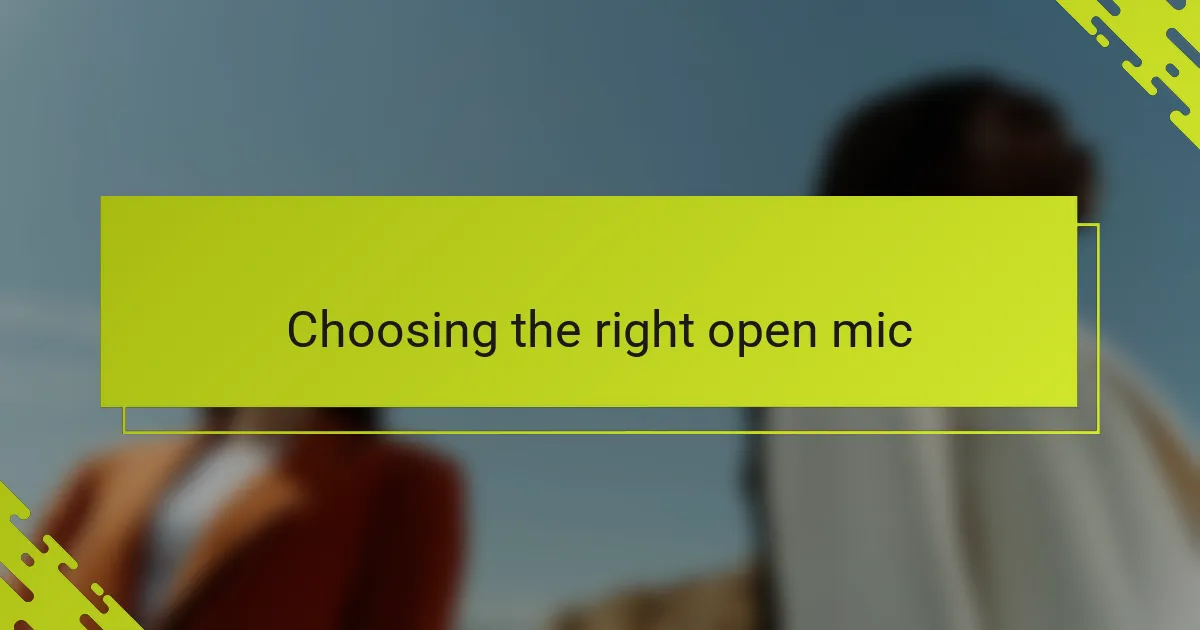
Choosing the right open mic
Finding the right open mic is like choosing a suit that fits not just your body but your spirit. I learned early on that some spaces felt more like judgment zones, while others welcomed me with open arms. How do you know where you’ll be seen and heard authentically? For me, it often came down to the vibe—did the audience feel like allies or just spectators?
I also pay attention to the lineup and the community that gathers there. Are there other queer women or folks who nod along when I speak my truths? When I performed at a night that explicitly celebrated queer voices, the energy was electric—it felt like stepping into a room full of mirrors reflecting parts of me I hadn’t fully embraced yet. Have you ever experienced that kind of reflection and affirmation mid-performance?
Sometimes, it’s about smaller details, too, like the venue’s size or the flow of the night. I remember a cramped basement stage where nerves roared louder than my voice, contrasted with a cozy coffee shop where the intimacy softened my edges and invited me to be bolder. Choosing an open mic can be about finding that balance between challenge and comfort—a space that stretches you just enough without breaking you.
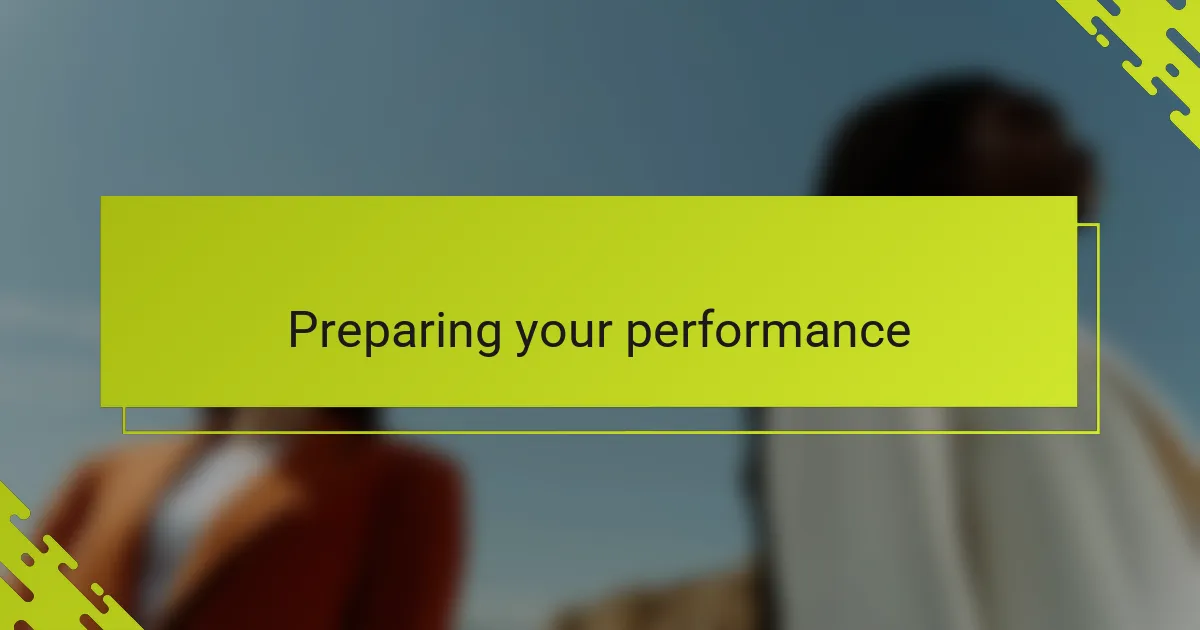
Preparing your performance
Preparing my performance always starts with sitting down and really listening to what I want to say, not just what I think others want to hear. Have you ever caught yourself tweaking your words to fit a mold, only to feel less like yourself on stage? I’ve learned that grounding my set in my own truths makes the experience both more freeing and more connected.
I often rehearse in my head during quiet moments—imagining the rhythm of my delivery and how I might land certain jokes or pauses. Sometimes, I even record myself, which can be a bit uncomfortable, but it reveals parts of my performance I hadn’t noticed before. How you shape your story matters, but so does the breathing room you allow it to have.
One thing I never skip is thinking through how the space might feel. Before a recent show, I pictured the audience’s faces, their reactions, and how I’d respond if nerves bubbled up. That mental prep helped me own the moment rather than shrink away from it. Have you found that envisioning your success makes the whole experience less daunting? For me, it’s a quiet ritual that shifts my mindset from anxious to ready.
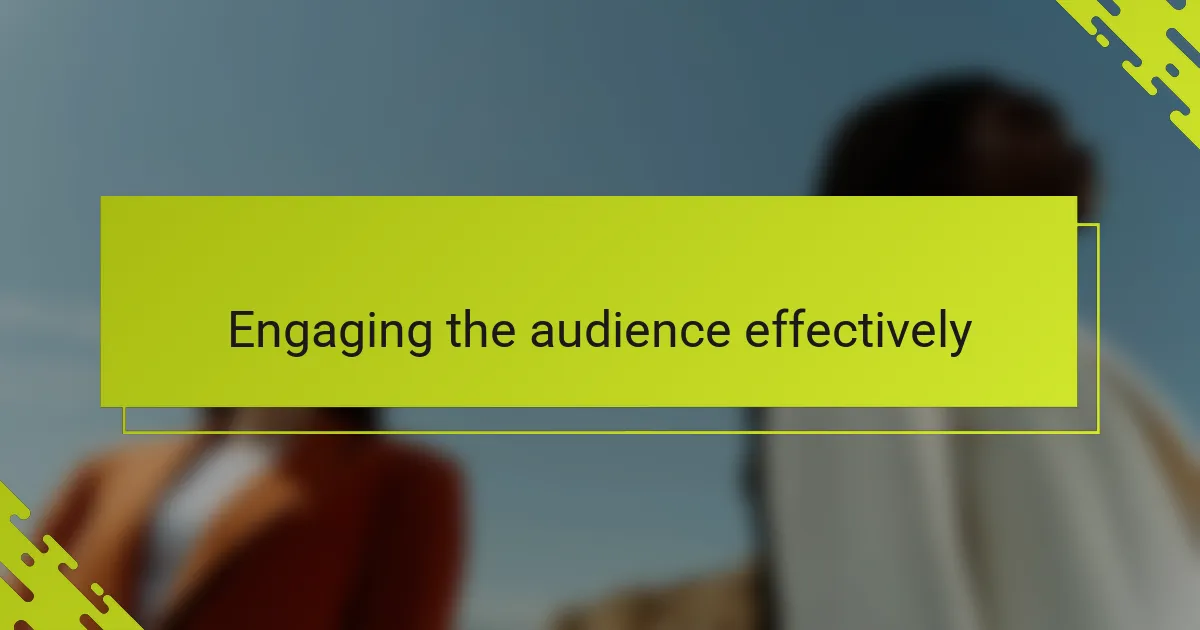
Engaging the audience effectively
Connecting with the audience starts long before you step to the mic. I find that locking eyes with a few friendly faces helps me feel anchored—it’s like finding little islands of support in a sea of strangers. Have you noticed how a shared glance or a smile can shift the whole energy of a room? That subtle connection invites the audience into your story, making them participants rather than mere listeners.
Timing and pacing are my secret weapons when engaging the crowd. I like to pause just long enough to let a punchline or a heartfelt moment breathe, letting the room react naturally instead of rushing through. There’s a delicate balance in reading the vibe—when laughter lingers, or silence settles, it tells me how my words have landed, and I adjust accordingly. Isn’t that dance between performer and audience what makes live shows so alive?
Sometimes, I throw in a little self-deprecating humor or ask a question mid-set to break the barrier. It’s my way of saying, “Hey, I’m here with you, not above you.” One night, when nerves threatened to pull me under, joking about my shaky hands actually turned the tension into laughter and eased us all. Moments like that remind me that vulnerability can be the strongest thread weaving performer and audience together.

Sharing personal stories and identity
Sharing personal stories on stage feels like laying down pieces of myself—sometimes rough, sometimes polished, but always real. I’ve found that when I speak openly about my identity, the room shifts; it grows warmer, more attentive. Have you ever sensed that instant spark when your truth meets someone else’s understanding? That’s the magic of these moments.
It’s not always easy to reveal those intimate parts of myself, especially in front of unfamiliar faces. I remember a night when I hesitated, afraid my story wouldn’t resonate or might even provoke judgment. But as I spoke, the silence turned into nods, then applause—it was as if my vulnerability carved a path to connection. Doesn’t that kind of acceptance make the risk worth it?
What I love most is how sharing personal narratives at open mics strengthens my sense of identity. Each story told isn’t just performance; it’s an act of claiming space in a culture that often renders queer women invisible. Have you noticed how telling your story can transform not just how others see you, but how you see yourself? For me, those moments on stage are affirmations—loud and clear—that I belong.
